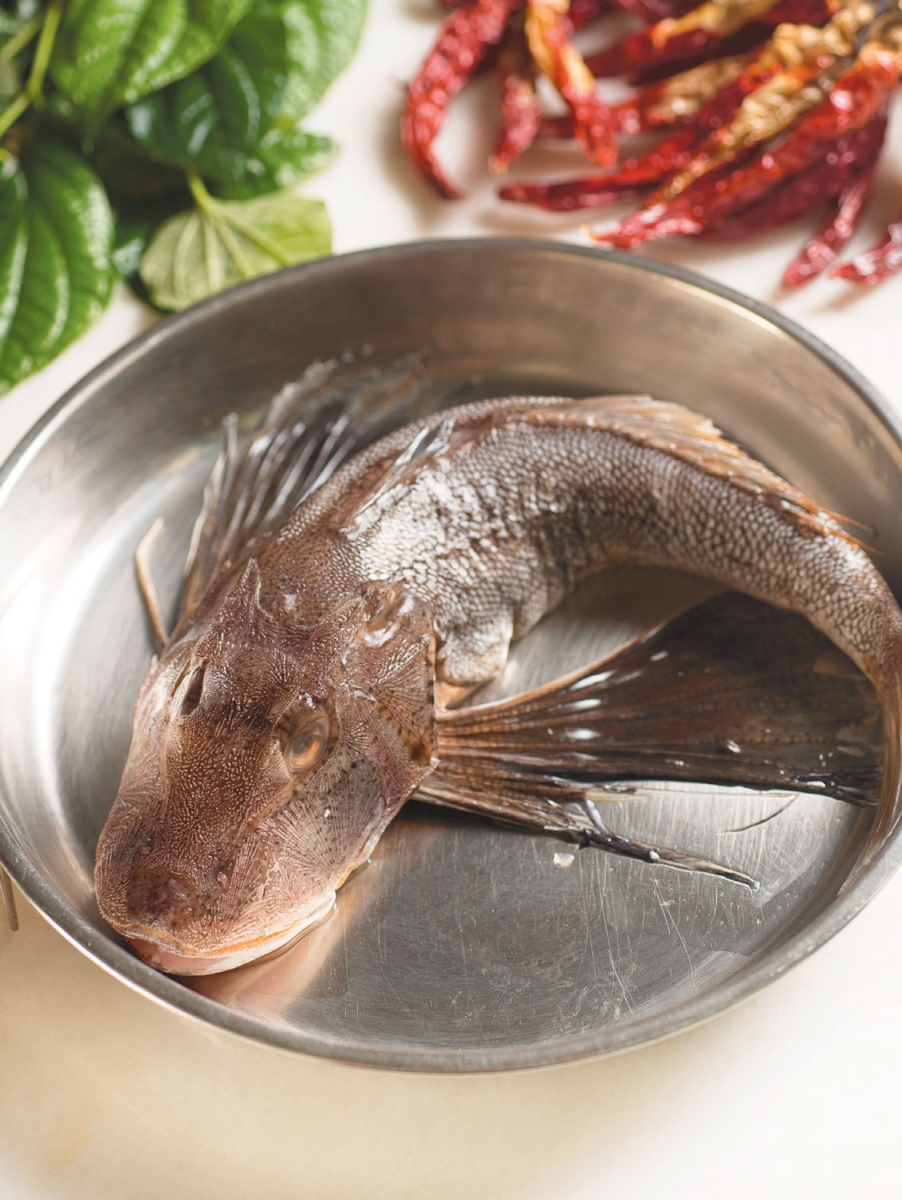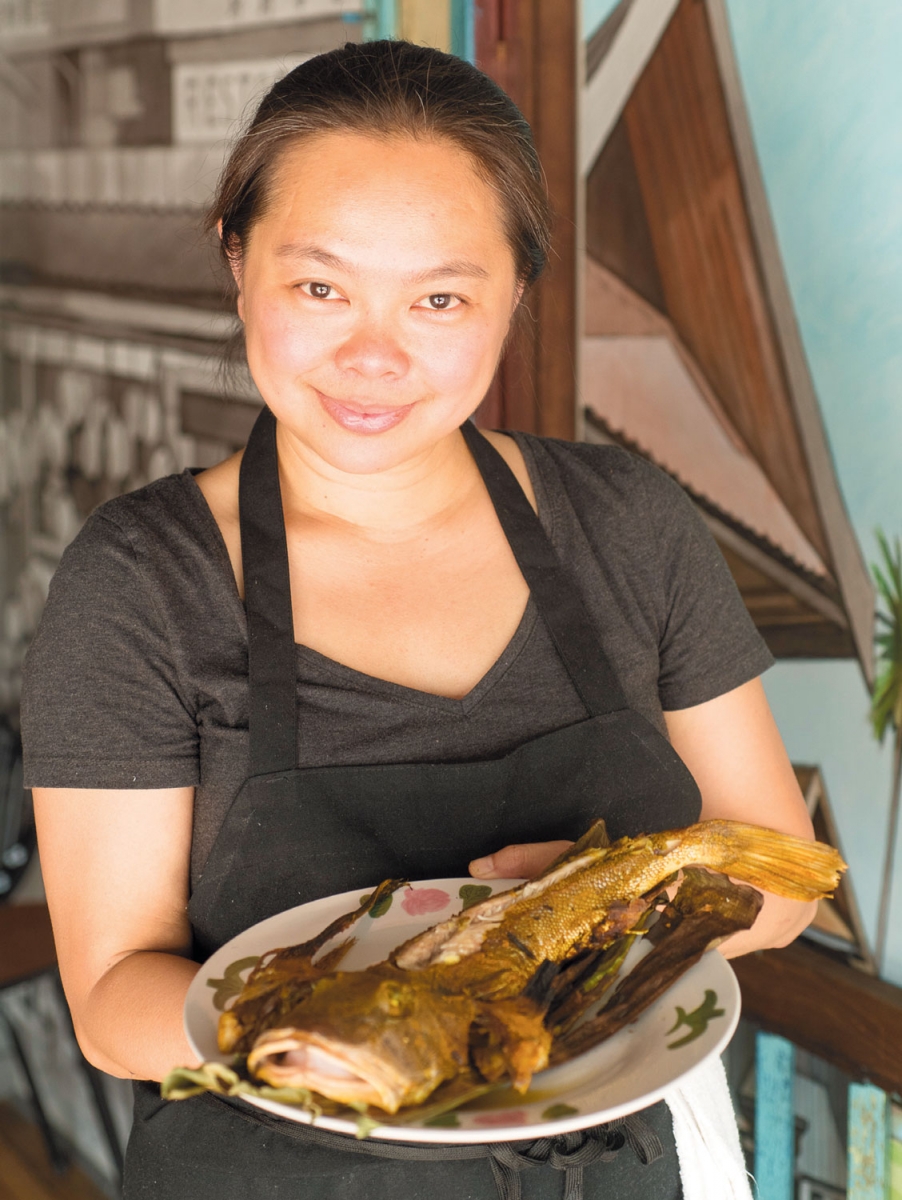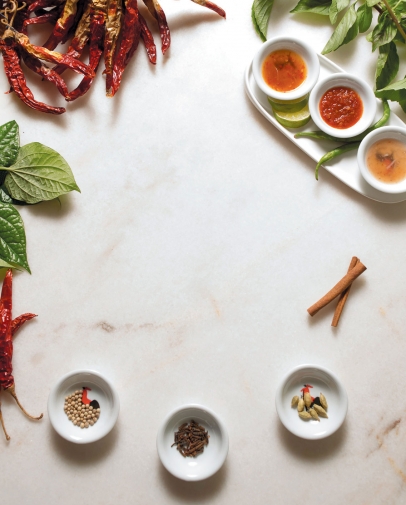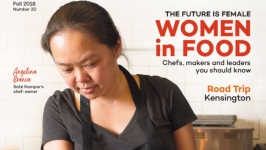Home Away from Home: Local Ingredients Create Faraway Flavors
How Chef Angelina Branca uses local ingredients to create faraway flavors
BRUNCH SERVICE HAS JUST STARTED, and Saté Kampar on East Passyunk is still empty as I walk past the kitchen through a wall of scent. It’s warm and nutty, with an undercurrent of coconut and rice, and something else I can’t place.
As I sit down for breakfast with Angelina Branca, the chef and owner of the restaurant, I ask her about that fragrance. “Most Malaysians will tell you when you walk in here, it smells like a saté place,” she says, referring to Malaysia’s (and the restaurant’s) signature skewered meats that are traditionally grilled over coconut shell charcoal. “After two years, I think our walls are probably infused with this aromatherapy,” Branca says.
It’s easy to imagine Branca importing the bulk of her ingredients, in the name of recreating that smell and the flavors of a culture 12 time zones away—an endless stream of packages from overseas arriving at the kitchen’s doorstep. But that isn’t the case. Since opening the restaurant two and a half years ago, Branca has maintained a commitment to sustainability, an integral part of the food culture she was raised in. “Supplying this restaurant is not an easy task,” she says. It’s one that requires constant vigilance, maneuvering and discussion, most of it invisible to diners.
Case in point: Whole grilled fish rubbed with fermented shrimp paste or a blend of spices like turmeric, coriander, fennel seed and cumin, then wrapped in banana leaf and grilled. It’s served almost nightly. But, when Branca opened the restaurant, “we didn’t have grilled fish, because I just didn’t have access to too many varieties besides salmon and tuna. In [Malaysian] cuisine, we don’t really eat fish fillets,” Branca explains. Instead, fishermen bring whatever they catch and sell the whole fish to cooks.
It wasn’t until New Jersey–based fish purveyor Local 130 Seafood offered to sell her just that—whatever was caught locally and sustainably, unbutchered—that Branca added fish to the menu. It’s just one of the many ways she balances her commitment to local ingredients with her devotion to Malaysian culinary traditions.
Other ingredients Branca relies on, like culantro, or Vietnamese coriander, and Thai basil, have become more readily available locally as a growing community of Southeast Asian immigrants build a life for themselves in Philadelphia.

“I’ve taught a lot of people to appreciate a fish head,” she says with pride.
Often, those fish are so-called trash fish or bycatch like sea robin and weakfish, which fishermen regularly catch but are forced to throw out because they can’t sell them. “It’s very sad that it’s called trash fish, because it’s so delicious,” Branca adds.
Serving them allows her to introduce diners to alternatives to overfished species, as well as parts of the fish that most local diners overlook, like the leftover fish heads she buys from her suppliers. Branca prepares those heads in a tamarind and tomato curry with just a touch of coconut milk. “I’ve taught a lot of people to appreciate a fish head,” she says with pride.
“It’s not just about the ingredients,” Branca explains. “It’s about how we approach food, how we approach eating.” It’s a sentiment that applies here as much to produce as it does to protein.
When she placed an order with Green Meadow Farms (Lancaster) for fiddlehead ferns, she needed to explain that what most restaurants order, the small shoots, isn’t what’s eaten in Malaysia. “It’s not very sustainable to just eat the shoots,” Branca says. Instead, the custom is to let the plant grow in the jungle to its full size and then use its entirety in salads. Other ingredients Branca relies on, like culantro, or Vietnamese coriander, and Thai basil, have become more readily available locally as a growing community of Southeast Asian immigrants build a life for themselves in Philadelphia.
Still, she says, “there are some very specific Malaysian ingredients that no one uses, and those are the things I have to import.” On the list is butterfly pea flower, which tints rice, drinks and desserts a brilliant blue. “My family has to harvest the flowers and dry them, vacuum pack them for me and mail it over.” She also imports certain fermented seafood products that are unique to Malaysia.
Branca’s constantly working to change the market, though. A local Malaysian immigrant who operates a small garden in Philadelphia is collaborating with her to cultivate a variety of cosmos, a flowering green with a green mango and cucumber flavor to it, used for ulam raja, a salad dressed with a sambal (hot sauce) made from fermented shrimp paste, shallots, lime and chile. Last year’s crop of cosmos produced enough for the salad to make its way onto the menu, but not enough flowers and seeds to plant this year’s crop. The gardener put some seeds aside in case this happened, but, as with many of the ingredients, Branca says, “we’re going to have to work on it.”
Her approach isn’t as “easy as just buying whatever’s available,” Branca says. “Each ingredient takes research, it takes work.” That work, at its core, is marrying two homes that are nearly 10,000 miles apart.
Back at our breakfast table, our packets of nasi lemak—coconut and ginger rice, crisp dried anchovies, peanuts, a hardboiled egg, cucumbers and spicy sambal, all wrapped in banana leaves—have arrived. The packages mirror those Branca and her brother purchased from a vendor who biked through their neighborhood every morning while they were growing up in Kuala Lumpur. Branca opened the restaurant to “recapture all of those memories,” she explains.
When I ask her where home is, she responds, “I kind of feel like I made [my] home here in this restaurant, which is a Malaysian space in Philadelphia.”
Saté Kampar
1837 E. Passyunk Ave.
267.324.3860








